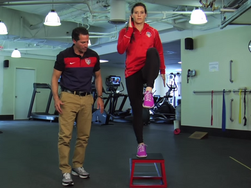Do You Assess Joint Hypermobility?

The Beighton Score is the most commonly reported measurement tool for differentiating between those with and without Generalised Joint Hypermobility (GJH).
There is however disagreement in the literature as to age & sex specific cut-offs that differentiate those with and without GJH; with a Beighton Score cut-offs ranging from >4 to >8 identified in the literature.
Despite this, a score of >5 is suggested for females aged 8-39yrs and >4 for males aged 8-39yrs (Singh et al 2017).

So why should we be assessing GJH; especially in our ACL injured patients?
Larson et al (2017) found that over a 6yr follow up period there was a higher 2nd ACL injury rates in those identified as hypermobile (34%) vs those who were identified as non-hypermobile (12%) irrespective of graft type.
There's way more to reducing 2nd ACL injury risk than GJH but knowing whether someone has GHJ can allow for an open discussion of reinjury risk factors and informed decisions made about future high risk sport participation.
If you're interested in learning more, consider taking Learn.Physio Brand New Masterclass - The Adolescent Knee - by clicking here











































Comments